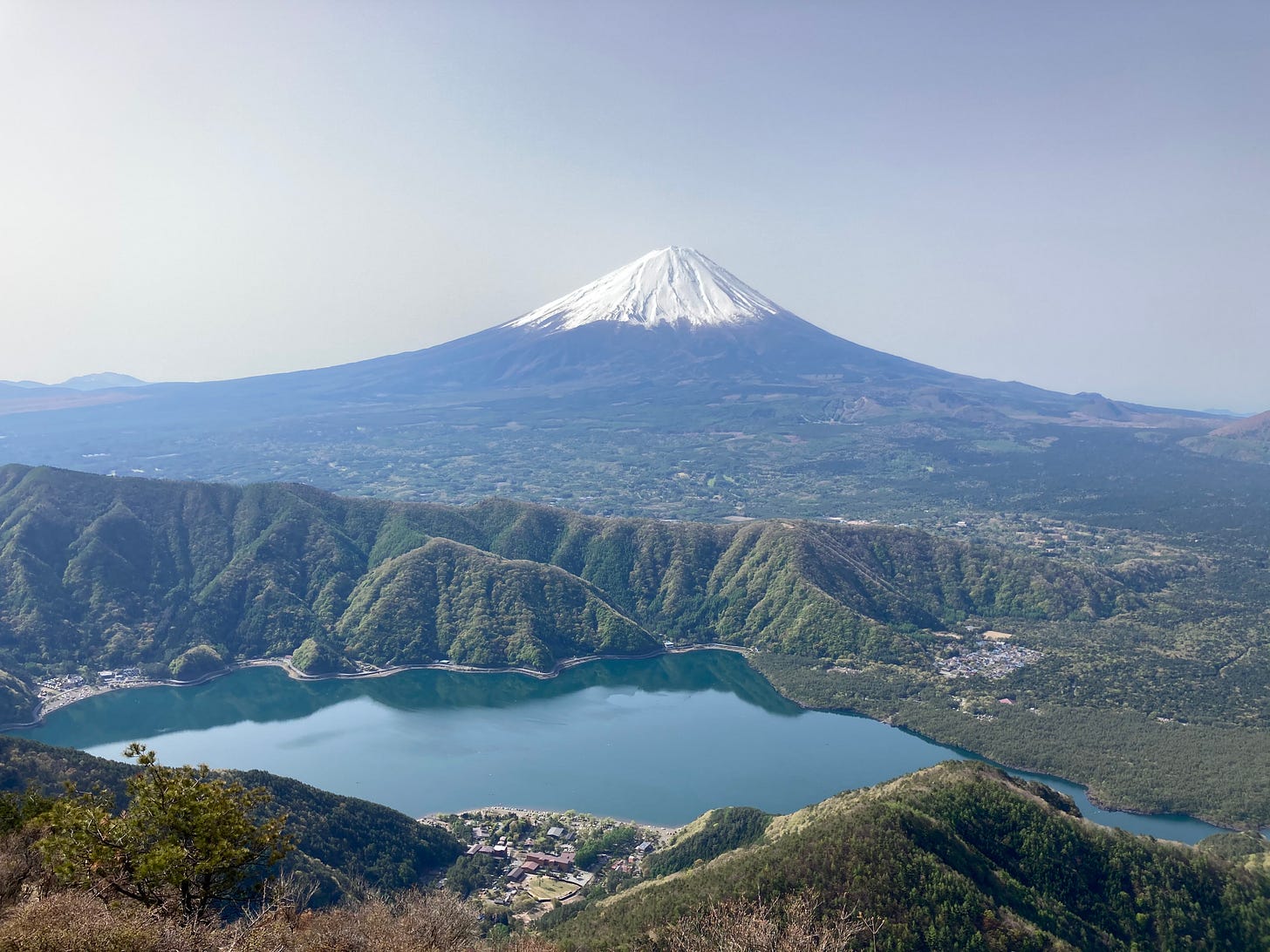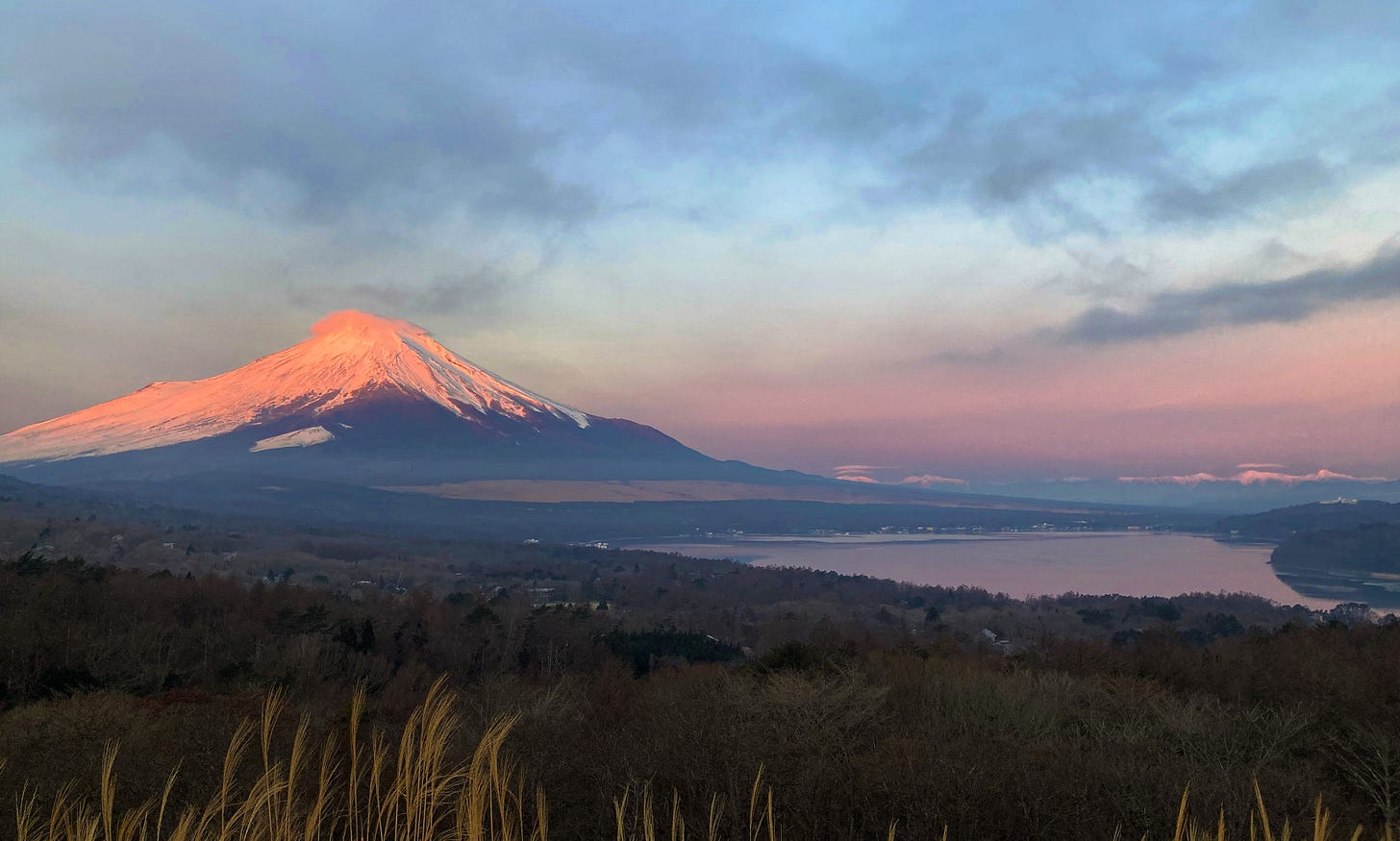If I ask you to name mountains in Japan, 99% of you will say Mt Fuji. Mt Fuji has been described as the best mountain in Japan for many years from its beauty and reputation. But I have been always asking myself if Mt Fuji is to climb or to enjoy viewing. And most of you would say that you want to climb and conquer the highest peak in Japan. In this newsletter I will explain essential information and other alternatives when you have time to visit this area with a little bit of history.
I must mention one thing about the status of Mt Fuji as a volcano. Japanese authority no longer categorizes the status of volcanos in the country, but Mt Fuji is still in active condition. The last eruption took place in 1707 and according to old records, ash was piled up 5cm in Kawasaki, which is roughly 100 km east of the mountain. So, there are some concerns about next timing of eruption. But please don't worry, we live and watch Mt Fuji every day. We'll come to know if there are any serious sign of the activities.
So, there are some important information once you decide to climb especially if you are staying in Japan for a short period of time. You must be well equipped, and it is advisable to be on a group tour or with a guide. Fluctuation of weather is very quick and for the worst case scenario you will end up stopping your walking with hypothermia. During the summer season we see some people climbing with short pants and a T-shirt, but please stop and think that you are going roughly 20 degrees colder place from the bottom.
CLIMBING MT FUJI
*Season: 1st of July to 10th of September, depending on routes (2021 season)
*Access: 3 routes from Shizuoka and 1 route from Yamanashi. Easy access to the 5th step by bus.
*Accommodations: It is not impossible to climb in one day, but it is advised to stay overnight on the way for acclimatization. (booking essential)
*Water: There is no source of water once you start, so you must carry or buy expensive water.
*View from the top: It is quite rewarding if you are lucky without clouds.
*Before and after the climbing season, climbing is entirely at the climber's own risk and there is no supply of any kind. There may be still some snow before the season and sudden snow fall can be expected even before the season ends.
VIEWING MT FUJI
*Location: Hundreds of good locations, but you must know them precisely. Combinations of lakes and Mt Fuji if you can go up higher places. I will cover some of the possible places in the near future.
*Season: You must avoid summer and early autumn to see typical Mt Fuji with snow on top. You don't find snow on top during summertime. It has been said that April is the month when Mt Fuji has the most snow.
*Timing in a day: You always have a good chance to see the whole mountain in the morning. It is very rare that you get to see the mountain for the whole day. Normally you'll see clouds in the afternoon. Especially the weather will start getting worse if you see clouds like umbrellas covering the top.
*Additional tip: "Akafuji" is very special which you can see under limited condition. Mt Fuji changes its color to red by the reflection of the sunrise. Location and humidity are key factors.
So are you going to climb or just to view? Of course, you can choose both if you are a Fuji freak. But climbing Mt Fuji is not the only way to enjoy it the most.







